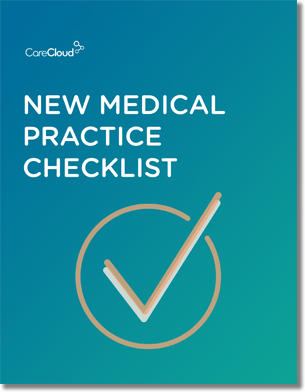By the time you’re done reading this article, more than 122 million emails will have been received worldwide — almost 23 times as many Google and Facebook searches combined.
And because it takes relationships to build a successful medical practice, what better way to strengthen the doctor/patient rapport than through the most widely used form of online communication?
A physician email marketing campaign is a great way to engage current patients as well as attract new ones to your practice, but succeeding online isn’t as simple as it may seem. Certain strategies have been proven to work over others, and you don’t want to waste your time on a marketing endeavor that won’t produce results.
In this week’s installment of our Practice Marketing Series, we discuss the three most important facets of an effective email marketing campaign.
Strong Email Lists
In order to successfully connect with your audience, you have to build a strong email list with quality targets. In an online environment where anyone can post anything they want at any time, email is a great way to make sure your patients are directly receiving the information you want.
Begin by getting an email address from every patient and referring provider in your network. Let them know you’ll be sending useful and pertinent health information. Reassure contacts you won’t spam their inboxes. An easy way to grow your list is by adding a noticeable “subscribe” button on your website and social media pages.
Once you have a strong list of recipients, you can use a low-cost (or even free) email service provider like Mailchimp for delivery. After sending your email, these services provide you with a report of how many people opened, read and forwarded your message.
Clear Subject Lines
According to a Convince and Convert study, 33% of email recipients open emails solely based on the subject line.
The best subject lines are short, conversational and targeted. They tell the reader exactly what’s in the email. There’s no need for surprises. Like a good newspaper headline, an email subject line should let the reader know what’s inside.
For instance, “Can Reusing Water Bottles Cause Cancer?” will get more opens than “Cleveland Oncologist Newsletter.”
And last but not least, don’t be deceiving with your subject lines. This can turn off your readers and cause them to unsubscribe.
Informative Newsletters
An informative, consistent and visually appealing newsletter is one of the best ways a physician can market their practice online. There are just a few things to keep in mind when producing a profitable newsletter.
Aim to educate. Sending regularly scheduled updates on practice happenings, reactions to news headlines and timely reminders for things like flu shots can be a great way to get patients involved and serve as a reminder for rescheduling an appointment.
Instead of talking about yourself, educate your readers about health issues important to them. Your objective is to teach, not sell. A properly executed newsletter will convince readers that you’re the expert they want to go for treatment, as well as keep it interesting for even casual readers.
A final word of advice: keep mobile size dimensions in mind when designing an email. Approximately 40% of mobile users in the U.S. read email through their mobile devices. In fact, mobile email open rates jumped 34% in the last six months of 2011 while desktop email opens dropped by 9.5%.
All in all, if you spend the time strategizing and producing an impactful email campaign, you want to make sure everyone in your audience can view your message the way you meant it to look. This is the kind of care that leads to success.

Do you know what you need when setting up a new medical practice?



